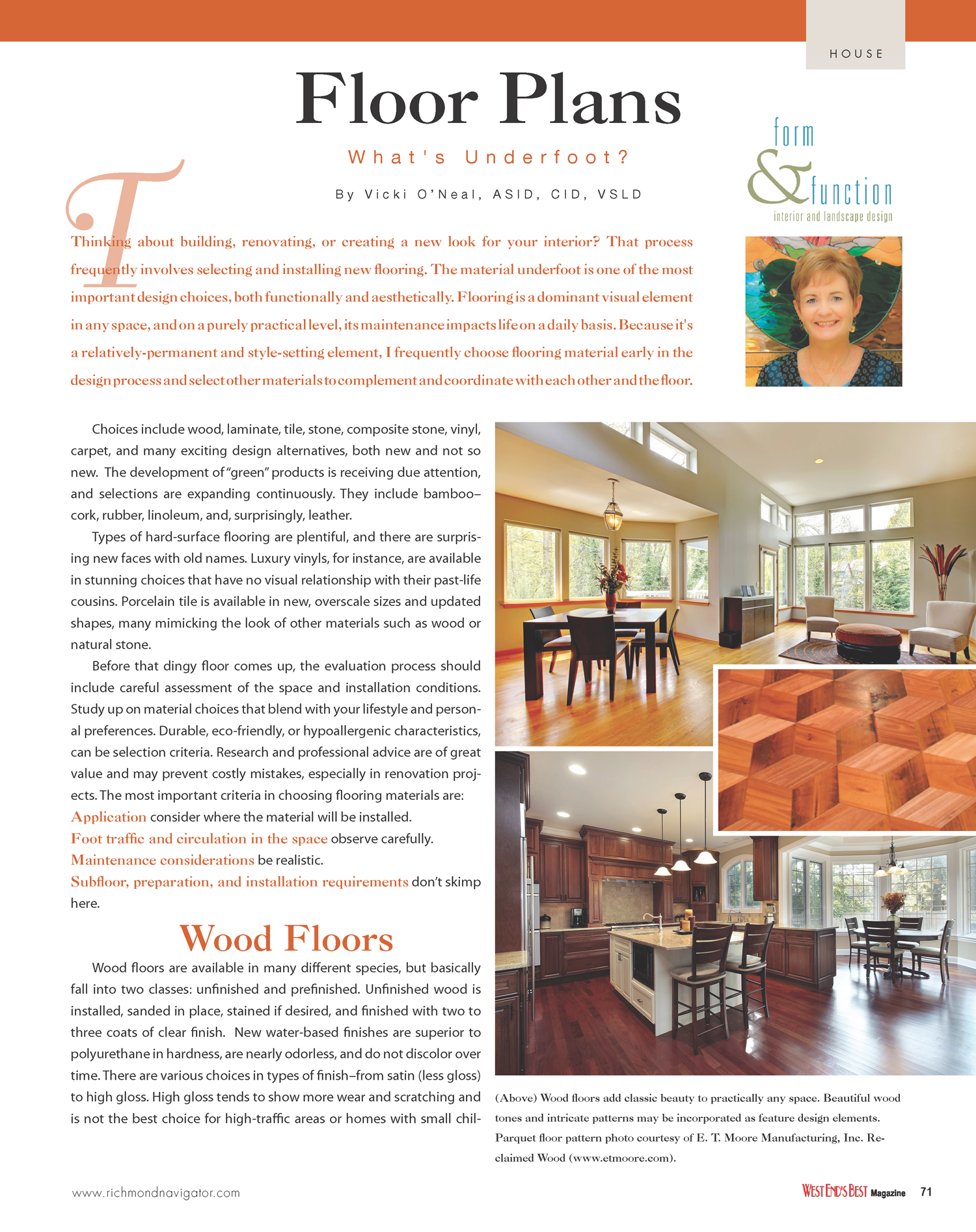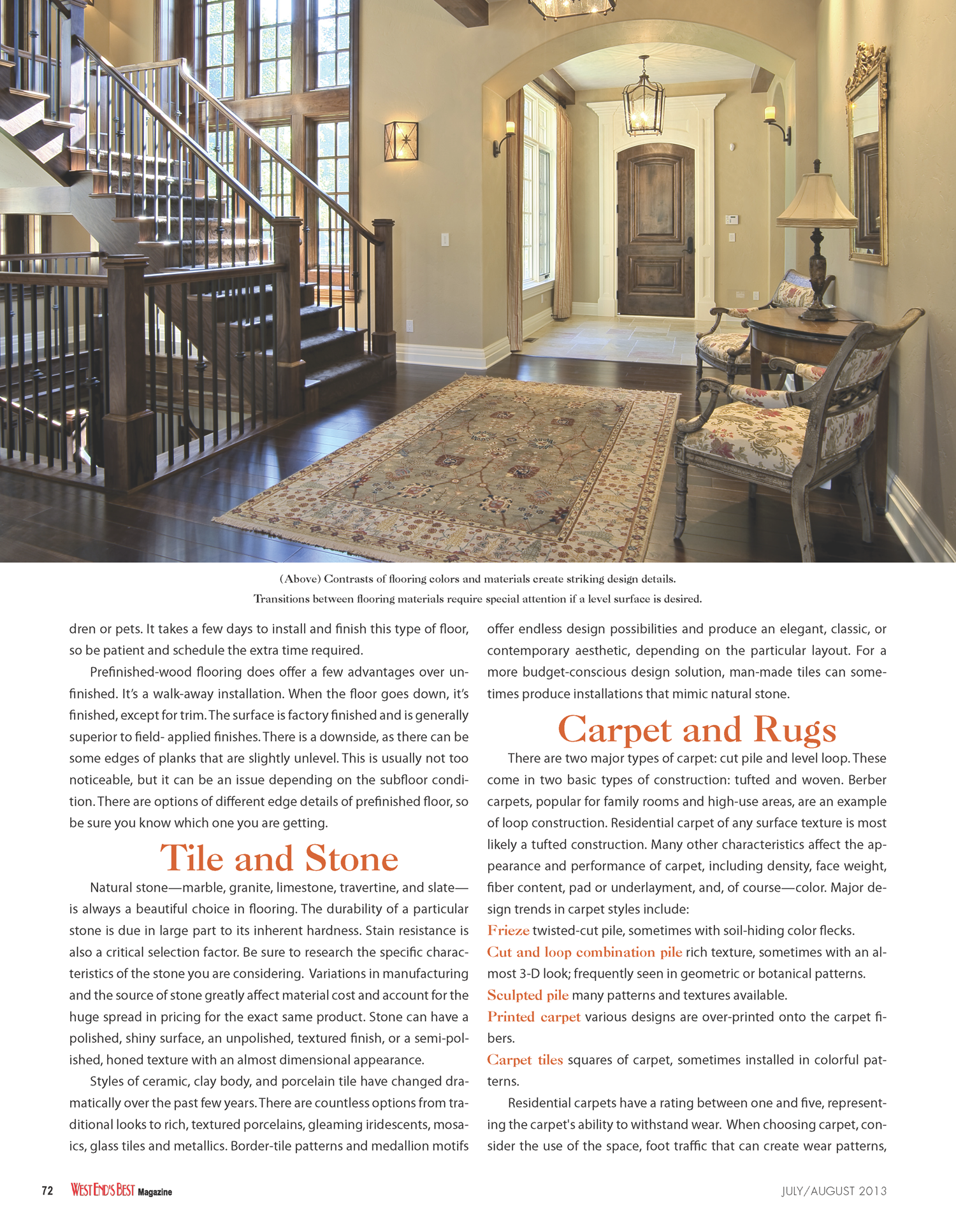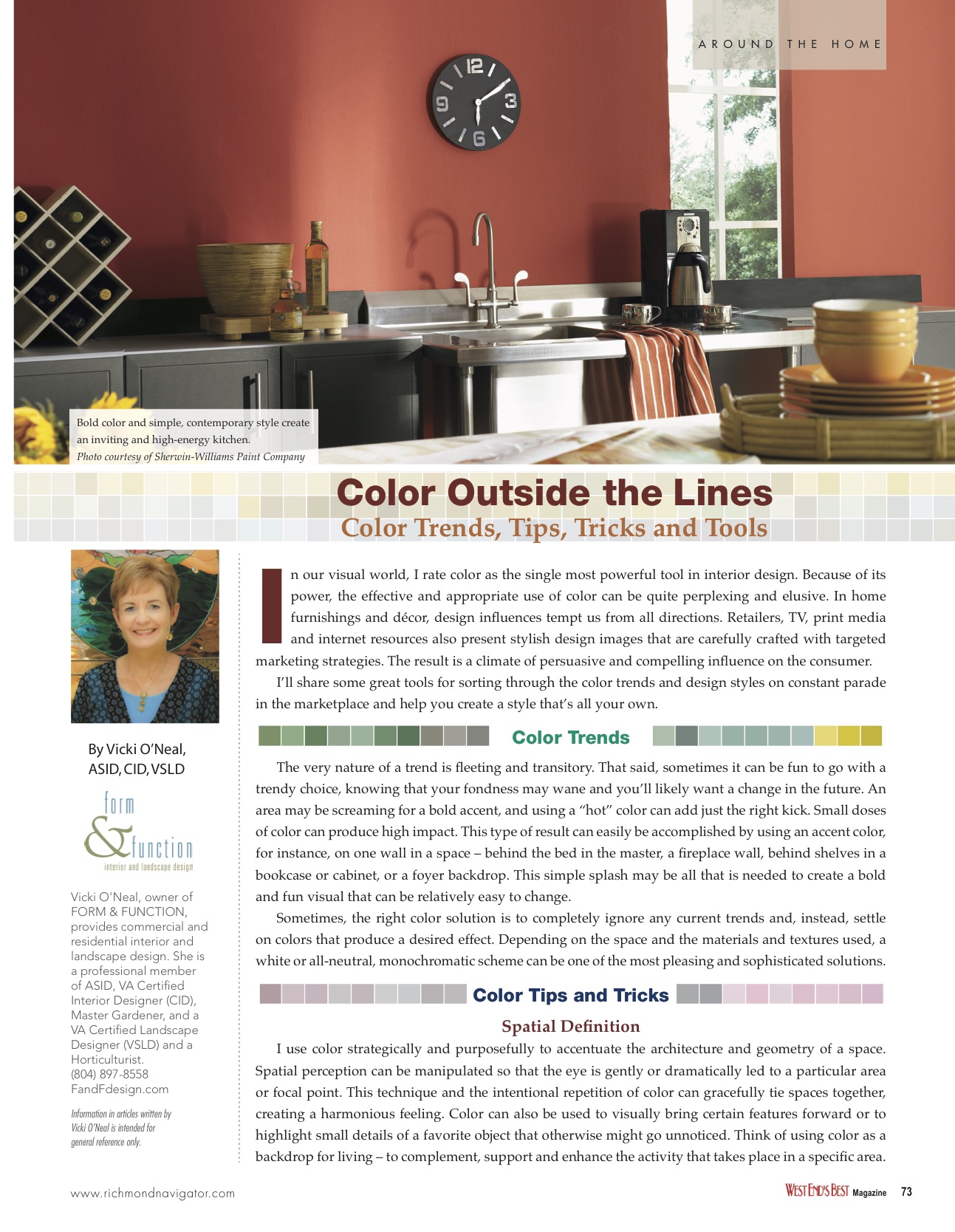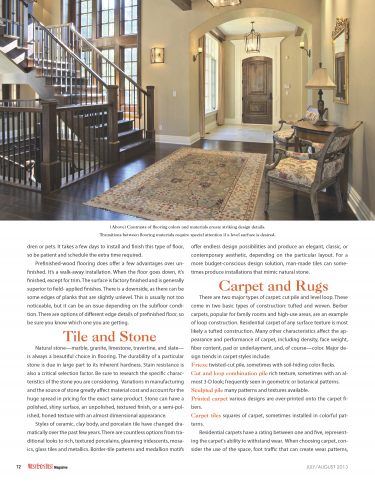
CARPET AND RUGS
There are two major types of carpet: cut pile and level loop. These come in two basic types of construction: tufted and woven. Berber carpets, popular for family rooms and high-use areas, are an example of loop construction. Residential carpet of any surface texture is most likely a tufted construction. Many other characteristics affect the appearance and performance of carpet, including density, face weight, fiber content, pad or underlayment, and, of course—color. Major design trends in carpet styles include:
- Frieze—twisted cut pile, sometimes with soil-hiding color flecks.
- Cut and loop combination pile—rich texture, sometimes with an almost 3-D look; frequently seen in geometric or botanical patterns.
- Sculpted pile—many patterns and textures available.
- Printed carpet—various designs are over-printed onto the carpet fibers.
- Carpet tiles—squares of carpet, sometimes installed in colorful patterns.
*Page 2- my article appearing in the June/ July issue of Richmond,Virginia’s Chesterfield Living, West Ends Best, and Hanover Lifestyles.
Residential carpets have a rating between one and five, representing the carpet’s ability to withstand wear. When choosing carpet, consider the use of the space, foot traffic that can create wear patterns, the construction, and color. Light colors could be used in bedrooms, for instance, but might not be an appropriate choice for an active area. Know how your carpet will be installed and where the seams will be located. Hard surface flooring can be installed adjacent to carpet at doorways and in heavy circulation paths to improve carpet life and appearance retention.
Area and oriental rugs make some of the prettiest and most impressive design statements for traditional and contemporary interiors. Their construction is similar to carpet—tufted or woven—and they can be made by machine or by hand. Natural materials such as wool and silk offer an exquisite hand or feel and are unmistakable in their beauty and luxury. For more casual spaces, synthetic materials can be stylish, durable, and budget-friendly options.
KEEP IT SIMPLE
Flooring selections throughout your home should blend gracefully and functionally, one material to the next. Keep the palette simple, and be sure to install the proper threshold when transitioning between surfaces. Sound deadening can be a consideration for hard surfaces, especially when they are installed upstairs. Always finish closets with the same material as the adjacent area.
Critical to the success of any new flooring are preparation and installation procedures. Always check the manufacturers’ recommendations and subfloor requirements, and use only specified materials, fasteners, adhesives, and post-installation maintenance. Most warranties are null and void if the product is installed or maintained contrary to the manufacturers’ specifications. Choose wisely to insure enjoyment for many years to come.
*Thanks to Advertising Concepts, Inc. (ACI) and Richmond Navigator for publishing this article! http://richmondnavigator.com/blogs/around-the-house/floor-plans/
Related posts:
Tags: flooring choices, green products, interior design, maintenance, renovation, wood floors
Leave a Reply Cancel reply

More Story
Floor Plans-What's Underfoot?... Part 2
WOOD FLOORS Wood floors are available in many different species but basically fall into two classes: unfinished and prefinished....Subscribe to the Blog
Site Menu
Recent Posts
- What's a gardener to do... in winter?
Jan 22, 2024 - New Year, New Plans!
Jan 1, 2024 - The Thoughtful Host
Dec 7, 2023
- What's a gardener to do... in winter?

You may link to a post or take quotes if credit, including a link back, is given.
You may not take entire posts or photographs without asking.
Permission may be requested using the contact form .

















Share On